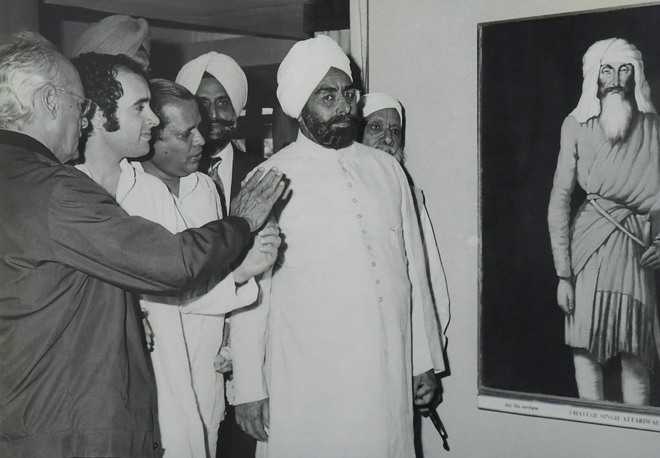The people’s person
Amarjot Kaur
In the capacity of a civil servant, Mohinder Singh Randhawa (MS Randhawa), who was also a botanist, algologist, historian, and a prominent writer, was instrumental in popularising the scope of art and culture. On his 109th birth anniversary, the Punjab Arts Council, Punjab Lalit Kala Akademi, Punjab Sangeet Natak Akademi and Punjab Sahitya Akademi have organised a week-long festival called MS Randhawa Art and Literature Festival at Punjab Kala Bhawan-16.
The first day of the festival began with an exhibition of Randhawa’s photographs where he is seen rubbing shoulders with the likes of Jawaharlal Nehru, Mahatma Gandhi, Indira Gandhi, Sanjay Gandhi, Giani Zail Singh, Dr S Radhakrishnan, Maharani Gayatri Devi, Richard Nixon and US Ambassador to India, John Kenneth Galbraith. While some pictures are black and white, others are sepia-coloured interpretations of his disposition. Poised and composed, Randhawa, in almost all of his pictures, comes across as a thorough gentleman and a people’s person. Whether he looks at the camera, or away from it, his body language exudes confidence.
Randhawa, who played major roles in the establishment of agricultural research and the Green Revolution in India, had been clicked at Bodal where he went to meet farmers and discussed their problems and attending meetings at the Parliament House with MA Swaminathan. In a frame, he poses along with the winner of Rose Festival and in the other, he seems to examine the bust of Mahatma Gandhi made by Farida Brilliant for Chandigarh Museum.
“These pictures,” says Diwan Manna, president of Punjab Lalit Kala Akademi and curator of the photo exhibition, “were given to me by Randhawa’s grandchildren. They are dear friends and very generous.”
While pointing at a picture of Randhawa, where he walks ahead of Nehru, Manna shares, “Here he is visiting the refugee camps where Punjabis, who were uprooted by Partition, were resettling. He also played a key role in establishing the city of Chandigarh and documenting the arts of Punjab and the history of agriculture in India,” he adds.
A picture of his, with Punjab Governor DC Pavate, clicked at Sukhna Lake, shows him immersing the remains of architect Pierre Jeanneret in the lake. “It was mentioned in Pierre Jeanneret’s will that his remains be immersed in the Sukhna Lake,” says Manna.
Apart from politicians, including Prakash Singh Badal, Randhawa, the member and chairperson of the Tribune Trust, shared a level of closeness with artists and writers like Amrita Pritam, Sobha Singh, Shiv Kumar Batalvi, Ajit Kaur, Norah Richard, Prithviraj Kapoor, Khushwant Singh, Nek Chand, Mulk Raj Anand, flutist GS Sachdev, Balraj Singh Saini and Gurbaksh Singh Preetlari.
The exhibition also features the visitors’ comments from his diary at his farmhouse in Kharar. If you like a little personal note from the famous ones in the city, don’t give this exhibition a miss.
amarjot@tribunemail.com









